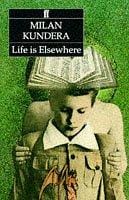Life Is Elsewhere: Meaning, Origin and Modern Resonance
Explore the origin, literary impact and modern relevance of the phrase "Life Is Elsewhere," from 1968 Paris graffiti to digital nomad culture.

Introduction: Why We Keep Saying "Life Is Elsewhere"
"Life Is Elsewhere" is a phrase that pricks the imagination the moment you hear it. It suggests that what we long for, what makes existence exciting and meaningful, is always located someplace other than where we are standing. This short sentence has slipped into literary criticism, travel journalism, Instagram captions and late-night conversations in cafés. Yet many people do not know where it comes from, how it evolved, or why it has become a modern mantra of restlessness. The following 800-word exploration traces the expression from its historical roots to its relevance in an age of global mobility and digital distraction.
The Birth of a Slogan in 1960s Paris
Although the idea of yearning for an elusive "elsewhere" is ancient, the exact wording "La vie est ailleurs" was scrawled on the walls of Paris by student protesters in May 1968. During those combustible weeks, thousands of young people challenged conservative politics, rigid university structures and consumerist values. "Life Is Elsewhere" functioned as street poetry: it urged passers-by to imagine futures beyond traditional careers, nuclear families and unquestioned authority. The graffiti captured the ferment of a generation who felt that authentic life existed outside bourgeois comfort.
Paradoxically, the slogan was at once revolutionary and evasive. It encouraged escape without specifying a destination. That ambiguity gave it legs; anyone could project their own dream onto the blank space of "elsewhere," whether that meant a different city, a different ideology, or a different self.
Milan Kundera and the Canonization of the Phrase
The Czech novelist Milan Kundera cemented the line in cultural history with his 1973 novel "Life Is Elsewhere" ("Život je jinde"). Written in exile and banned in Communist Czechoslovakia, the book tells the story of Jaromil, a young poet who yearns for artistic greatness while becoming entangled in totalitarian politics. Kundera uses the title ironically: Jaromil idolizes distant ideals but fails to see the moral compromises in front of him. The narrative critiques naïve romanticism—the illusion that fulfillment always lies just beyond reach.
Kundera’s global readership helped turn the phrase into a literary reference point. English majors quote it in essays on alienation; philosophers use it to discuss the human condition. Whenever someone mentions "Life Is Elsewhere," they invoke not just a slogan but an entire critique of youthful idealism and political utopianism.
Existential Overtones: The Philosophy Behind the Words
Beneath its literary pedigree, "Life Is Elsewhere" echoes core themes of existential philosophy. Jean-Paul Sartre, Simone de Beauvoir and Albert Camus all grappled with engagement: the idea that meaning arises from choices made in the present moment, not from abstract fantasies. To declare that life is elsewhere can be read as a refusal to engage with current reality. Yet the phrase also contains a spark of hope—the possibility that we can reinvent ourselves if we dare to move.
This tension explains its continued appeal. People oscillate between the need for rootedness and the itch for mobility. The slogan allows them to hold both impulses in a single sentence.
Travel Culture and the Romance of the Unknown
With the rise of budget airlines, remote work and visa-free travel, "Life Is Elsewhere" has become a tag line for the tourism industry. Influencers post sunrise photos from Bali, captioned with the phrase to signal that adventure awaits outside the nine-to-five grid. The promise is seductive: change your latitude and you will change your life.
While travel can indeed broaden perspectives, critics warn that turning the world into a bucket-list might simply transfer dissatisfaction from one airport lounge to another. If we treat destinations as consumer products, the elusive "elsewhere" will retreat as soon as we arrive, prompting another flight and another filtered image.
The Digital Nomad: A 21st-Century Pilgrim
The phrase has gained new momentum through the digital-nomad movement. Armed with laptops and Wi-Fi, thousands of professionals now hop from Chiang Mai to Mexico City chasing affordable rent and cultural novelty. For them, "Life Is Elsewhere" is not a metaphor but a business model. Coworking spaces double as communities, and border crossings become weekly rituals.
Yet the nomadic lifestyle raises philosophical questions. Does constant movement dilute deep relationships? Can a sense of belonging flourish without long-term commitment to place? The freedom celebrated in glossy blogs often coexists with loneliness, visa anxiety and the struggle to maintain routines.
Turning the Lens Inward: Personal Development
Psychologists interpret "Life Is Elsewhere" as a symptom of future bias, the tendency to idealize tomorrow at the expense of today. Research on happiness consistently shows that well-being depends more on present-moment awareness than on external achievements. Practices such as mindfulness, journaling and therapy can reveal how mental "elsewhere-seeking" undermines contentment.
Paradoxically, acknowledging that life is right here—inside everyday tasks, friendships and sensations—can make genuine adventures richer. When you are grounded, new environments become opportunities for layered meaning rather than quick fixes.
Critiques and Counter-Slogans
Not everyone embraces the phrase. Social commentators argue that it perpetuates consumerist dissatisfaction by implying that current circumstances are never enough. Environmentalists point out that endless travel has a heavy carbon footprint, urging would-be adventurers to explore local ecosystems instead of distant beaches. Alternative mottos like "Life Is Also Here" or "Life Is Everywhere" have surfaced to promote ecological and psychological sustainability.
How to Live Here and Elsewhere
The challenge is to combine the healthy curiosity embedded in "Life Is Elsewhere" with the grounded presence advocated by mindfulness teachers. One strategy is intentional travel: choose destinations that align with personal values, allocate time for cultural immersion and give back to local communities. Another approach is micro-exploration—treating one’s own neighborhood as a foreign land to be wandered with fresh eyes.
On a psychological level, journaling before, during and after a journey helps integrate external experiences with internal growth. That way, "elsewhere" becomes a mirror reflecting aspects of the self that might otherwise remain hidden.
Conclusion: The Enduring Allure of Elsewhere
More than five decades after spray-paint first dried on Parisian stone, "Life Is Elsewhere" continues to resonate because it captures a universal human itch: the search for meaning beyond the boundaries we inherit. Whether we encounter the phrase in Kundera’s novel, a subway poster or an airport departure board, we recognize ourselves in its promise and its warning. The task is not to silence the call of elsewhere but to answer it wisely—balancing outward exploration with inner presence. When we do, we discover that life is both here and elsewhere, unfolding in every step we dare to take.



